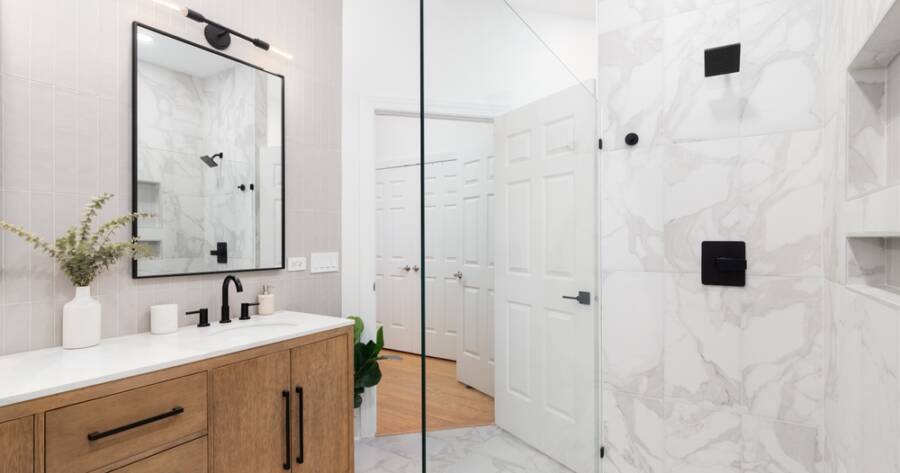Bathroom remodels can be an essential upgrade for homeowners, particularly for seniors and individuals with disabilities, who may require more accessible or safer facilities. Government-sponsored programs provide financial support to help fund these renovations, making them more affordable and ensuring that homes are up to modern standards. Explore the options available to find out if you qualify.
What Is a Government-Sponsored Bathroom Remodel?
Government-sponsored bathroom remodels are renovation projects supported by public programs designed to improve the living conditions of homeowners, particularly low-income families, seniors, and individuals with disabilities. These programs can offer financial assistance in the form of grants or loans (such as HUD loans) to help with bathroom upgrades such as improved accessibility or energy-efficient fixtures.
Many of these programs are offered by federal, state, or local governments, and the eligibility criteria often depend on factors such as income, location, and household needs. These funds help homeowners maintain safer, more accessible living spaces.
Financial Assistance for Your Bathroom Renovation Needs
If you’re looking to renovate your bathroom but find the cost prohibitive, you may qualify for specific grants or loans that reduce your out-of-pocket expenses. These grants are typically available for individuals with low income, seniors, or those who need accessibility upgrades.
The process usually involves proving eligibility based on income level and other factors like home location. These financial aids can help make essential bathroom modifications more affordable, such as installing grab bars, walk-in tubs, or accessible showers that enhance safety and independence for those with mobility challenges.
Enhancing Accessibility for Seniors and Individuals with Disabilities
One of the primary reasons for government-sponsored bathroom remodels is to enhance accessibility, especially for seniors or individuals with disabilities. Modifications such as widening doorways, adding grab bars, or installing walk-in tubs can greatly improve safety and reduce the risk of accidents. These changes help people maintain their independence and continue to live comfortably at home.
Accessible bathrooms contribute to physical well-being as well as mental health by allowing individuals to perform daily activities without feeling restricted or unsafe. These modifications also promote inclusivity within communities, supporting residents of all abilities.
Exploring Single Family Housing Repair Loans and Grants
For homeowners in rural areas, the USDA’s Single Family Housing Repair Loans and Grants program offers financial support for necessary home repairs and renovations, including bathroom updates. This program provides significant funding to eligible low-income homeowners, particularly those over the age of 62, to address health hazards, improve accessibility, or repair damaged infrastructure.
The funds can be used for essential repairs that help improve the overall safety and functionality of a home, allowing seniors to age in place comfortably and securely. Homeowners can apply for these loans and grants through their local USDA offices.
Reducing Utility Costs with Energy-Efficient Fixtures
In addition to enhancing safety and accessibility, government programs also encourage the installation of energy-efficient fixtures during bathroom remodels. Energy-efficient updates, such as low-flow showerheads, water-saving toilets, and energy-efficient lighting, can help reduce water and energy consumption. These fixtures promote sustainability and lower utility costs over time, offering a return on investment.
Some government programs also provide tax incentives, rebates, or additional funding for homeowners who choose to make their bathroom upgrades more eco-friendly. By opting for energy-efficient solutions, homeowners can reduce their environmental footprint while saving on long-term utility expenses.
Other Ways to Fund Bathroom Remodels
Aside from government-sponsored programs, there are additional financing options for bathroom remodels. Homeowners may consider applying for a Home Equity Line of Credit (HELOC) or a home equity loan, which allows you to borrow against the value of your home.
Another option is a cash-out refinance, where you refinance your mortgage for more than you owe and take the difference in cash to fund your remodel. The FHA 203(k) home improvement loan is another alternative, as it can be used to finance both home purchases and renovations. Each of these options has its pros and cons, and homeowners should carefully assess their financial situation before choosing the best solution for their needs.
Empowering Homeowners to Create Safer Living Spaces
Government programs aimed at funding bathroom remodels are essential resources for homeowners looking to enhance their living spaces. By making necessary improvements, homeowners can improve safety, accessibility, and energy efficiency, all while reducing costs in the long run.
Whether through grants, loans, or tax incentives, there are numerous ways to make these upgrades more affordable. By taking advantage of these programs, you can create a safer, more comfortable home for yourself or loved ones, ensuring that your living space meets modern standards and supports long-term well-being.

